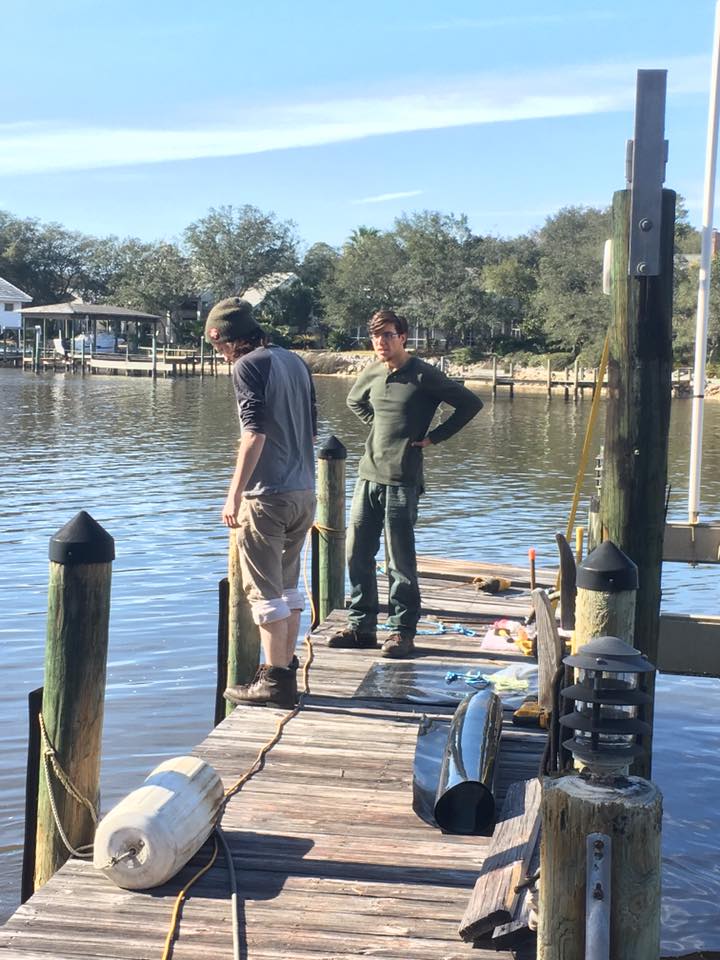Why Routine Maintenance Can Minimize Future Dock Repairs
Exactly How to Address Common Dock Fixing Issues for Safe Water Activities

Identifying Common Dock Issues
Identifying usual dock problems is critical for maintaining the performance and safety of your waterfront residential property. Routine inspections can aid discover troubles before they come to be severe, making sure both the longevity of the dock and the safety of those who utilize it. One prevalent issue is loosened or corroded bolts. In time, screws, screws, and other bolts can become loose as a result of consistent direct exposure to water and climate aspects, resulting in structural instability.
An additional typical trouble is the destruction of flotation gadgets. These gadgets are necessary for maintaining the dock buoyant, and any type of damage or slits can trigger the dock to listing or sink. Regularly examining for leakages or waterlogged floats can preempt more significant concerns.
Additionally, algae and barnacle accumulation on the dock's surface area can develop slippery and dangerous conditions. This biofouling not just presents a threat to individuals yet can likewise increase the deterioration of the dock materials.
Finally, checking for indications of rust on steel elements is necessary. Corrosion can jeopardize the honesty of the dock's framework, making it harmful. By consistently recognizing these common dock problems, you can make sure that your dock continues to be safe and secure and useful for many years to find.
Fixing Rotting Wood
When attending to the issue of deteriorating wood on your dock, it is critical to act promptly to stop additional deterioration. Begin by thoroughly evaluating the whole framework to determine all impacted areas. Use a screwdriver to penetrate the wood; if it sinks in quickly, the wood is most likely decomposed and needs immediate attention.
Be certain to cut back to healthy and balanced, solid timber, guaranteeing you eliminate all compromised material. After removal, deal with the continuing to be wood with a wood preservative to protect against future rot.
Next, replace the removed sections with marine-grade lumber or pressure-treated wood, which are a lot more immune to water damage. Secure the new pieces with galvanized or stainless-steel bolts to stop corrosion. In addition, applying a water resistant sealer to the brand-new wood can give an added layer of protection.
Securing Loosened Boards
Exactly how do you guarantee your dock remains practical and safe for all its customers? One important facet is securing loosened boards, which can otherwise present significant threats. Loose boards not only raise the threat of tripping yet can likewise compromise the structural honesty of the entire dock.

For reinstallation, make use of stainless or galvanized steel screws, as these materials use exceptional resistance to rust in aquatic environments. Make sure the screws are long enough to pass through deep right into the underlying assistance framework, but not as long that they protrude through the dock's surface Get More Info area. Pre-drilling pilot holes can assist stop the wood from splitting.
Lastly, preserve a routine examination schedule to determine and resolve any kind of brand-new issues without delay. By safeguarding loosened boards successfully, you add to the general safety and security and longevity of your dock, making it a dependable system for water activities.
Stabilizing Unsteady Pilings
Making sure the stability of unsteady pilings is paramount to preserving a practical and safe dock. Utilize a degree to check for upright placement and ensure they are driven deep sufficient into the substratum to supply appropriate support.
If the pilings are discovered to be unpredictable, one reliable method for support is the use of extra bracing. Cross-bracing with treated lumber or galvanized metal can significantly enhance stability. Anchor the braces securely to both the pilings and the dock framework to disperse loads evenly.
Normal upkeep and periodic reassessment of the pilings' security are crucial to guaranteeing long-lasting dock safety and security and functionality.
Replacing Rusty Hardware
Attending to unsteady pilings is simply one aspect of maintaining a dock's stability; another vital issue is changing rustic hardware. Over time, direct exposure to moisture and salt can cause the oxidation and rust of screws, bolts, and brackets, endangering the whole framework's safety. Regular evaluation for rust is important, specifically after extreme weather condition or seasonal modifications.
When rusty hardware is identified, prompt activity is required. Begin by choosing marine-grade stainless steel or galvanized equipment, both made to resist the extreme marine atmosphere. Make sure that you have the proper devices, such as wrenches and screwdrivers, to securely eliminate the old, corroded pieces without triggering further damage to the dock.
After eliminating the corroded hardware, completely tidy the influenced areas to eliminate any kind of residual rust or debris. Use a rust-inhibiting guide to exposed steel surface areas prior to setting up the new equipment. Tighten all fixtures safely to avoid future loosening, and occasionally check the fittings to make certain recurring security.
Replacing rusty hardware not only expands the dock's life expectancy yet also substantially boosts the safety of water activities. By proactively managing corrosion, you safeguard both the structure and its customers, making certain a pleasurable and safe and secure look at this website beachfront experience.
Conclusion
Normal assessments and upkeep are crucial to attend to common dock repair work issues and make sure risk-free browse around here water activities. Such aggressive steps add to the total safety and functionality of dock structures, cultivating a safe atmosphere for water-based activities.
Making sure the safety of water tasks hinges significantly on the appropriate maintenance and repair work of docks (Dock Repairs). These gadgets are vital for keeping the dock resilient, and any damage or slits can trigger the dock to list or sink. By consistently determining these usual dock issues, you can guarantee that your dock remains safe and secure and practical for years to come
Guaranteeing the security of unsteady pilings is extremely important to maintaining a secure and useful dock.Routine assessments and upkeep are necessary to resolve typical dock repair concerns and guarantee secure water activities.